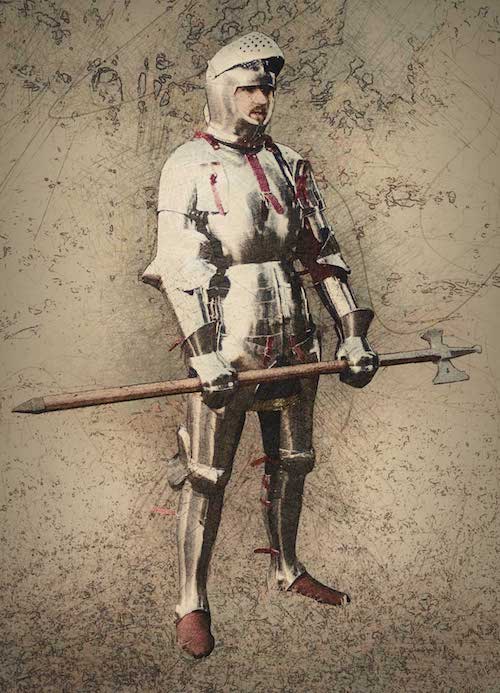Questions & AnswersFeatured questions submitted to Knightly Armes

A: Similar to buying a suit today, there were a number of options depending on the amount of silver a knight was looking to spend. Some gentry were more “landed” than others. Those on the lower spectrum were forced to buy “off the rack” from merchant armourers. More merchant-middleman than armourer, these businessmen essentially bought armour from distant manufacturers in bulk and re-sold it to their local clients. A man-at-arms in need of new harness could select from the various pieces those that best fit his body shape and personal taste; the merchant armourer would then make any necessary adjustments.

A: Purpose and style were perhaps the two most important factors that affected a knights choice in armour. Was it intended for use in tournament or on the battlefield? The Tower of London has in its collection a harness once belonging to Henry VIII that features a number of interchangeable pieces, all intricately acid-etched and partially gilded to match, depending on whether it was being worn on horseback in a joust, on foot in the lists, etc. A gentleman on a tight budget would likely not have the luxury of purchasing multiple sets of armour or specialized jousting helmets.
Knyghtly Armes answers the question...
Do you have a question you want answered?
Q: How much did armour cost?
Q: Was armour only worn by the knightly class?
Q: Did a knight's armour really shine?
Q: Where did a knight buy his armour?
Featured Videos
Occasionally, we flip the camera switch over to video in order to catch some of the action. Check out a selection of featured videos taken from our Knyghtly Armes channel on YouTube.

